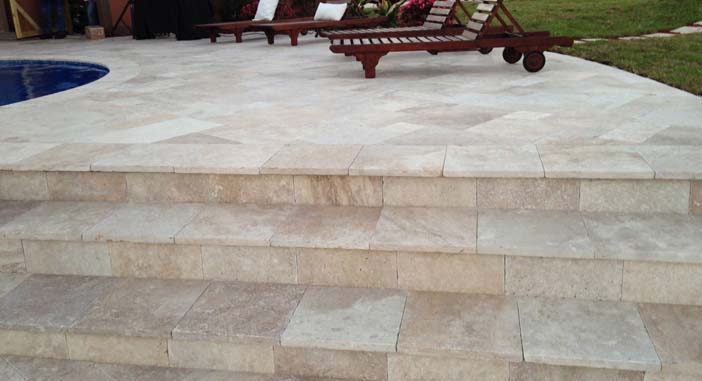What to fill holes in travertine pavers with? Travertine pavers are a beautiful choice for patios, pool decks, and walkways. Over time, though, small holes and pits can appear on the surface. This is natural for travertine since it’s a porous stone, but leaving these holes unfilled can make your pavers look uneven, collect dirt, or even cause damage. The good news is that there are several effective options for filling holes in travertine pavers, depending on your needs.
1. Travertine-Specific Filler or Putty
The most popular option is to use a travertine filler or putty. These are designed to match the stone’s color and texture, making repairs almost invisible. They come in pre-mixed or powder form and can be applied with a putty knife. This method works best for small to medium-sized holes and provides a smooth finish that blends with the stone.
2. Epoxy Resin
For deeper or larger holes, an epoxy resin is a strong and durable choice. Clear or tinted epoxy can be used, depending on whether you want the fill to blend in or stand out as part of the stone’s natural variation. Epoxy creates a long-lasting repair and resists moisture, making it a good option for outdoor pavers exposed to the elements.
3. Cement-Based Grout
Another common method is filling holes with cement-based grout. This works well if you’re repairing multiple holes at once. The grout can be tinted to match the travertine’s color, ensuring a consistent look. While not as seamless as filler or epoxy, grout is practical for larger areas and helps stabilize the paver surface.
4. Sand and Sealer Combination
For smaller pits and holes, some homeowners prefer to use a sand and sealer combination. Fine sand is swept into the holes, and then a penetrating sealer locks it in place. While this method isn’t as permanent as filler or epoxy, it’s a quick and budget-friendly option for keeping holes from collecting debris.
5. Professional Restoration Compounds
If you want the best possible match and finish, hiring a professional to use stone restoration compounds is an excellent choice. These compounds are designed specifically for natural stone and can restore the smooth look of travertine pavers while preserving their natural character.
How to Prevent Future Holes
While filling holes fixes the problem, prevention goes a long way:
-
Seal your travertine pavers regularly to protect against water absorption and erosion.
-
Clean with pH-neutral products to avoid damaging the stone.
-
Avoid harsh impacts that can chip or pit the surface.
Final Thoughts – What to fill holes in travertine pavers with?
Holes in travertine pavers are normal, but you don’t have to live with them. Whether you use travertine filler, epoxy, grout, or a professional restoration product, you can bring your pavers back to a smooth and polished look. Regular maintenance and sealing will also help extend the life and beauty of your travertine surfaces.

